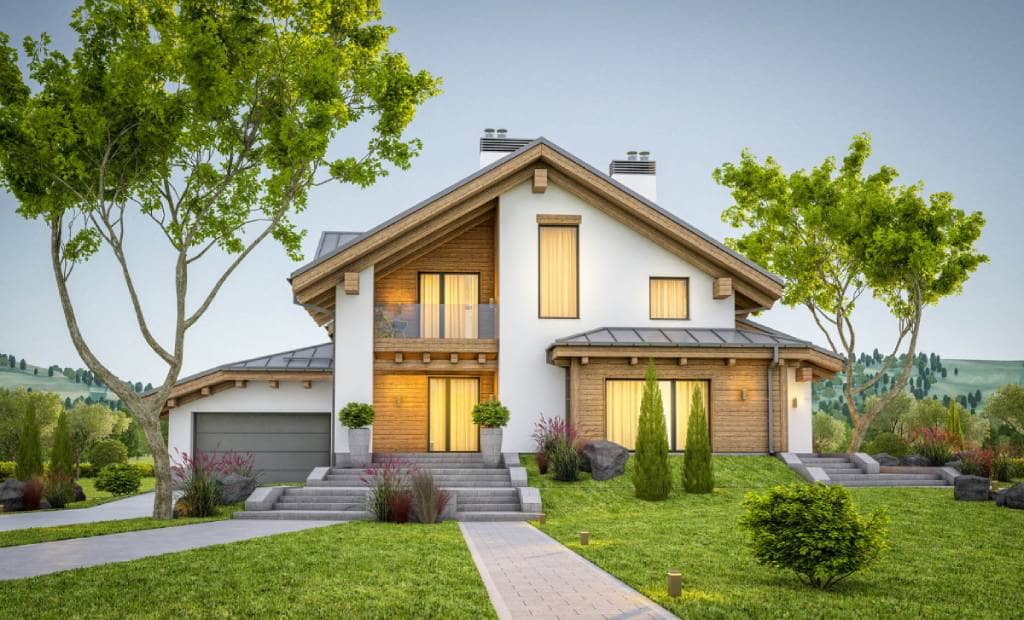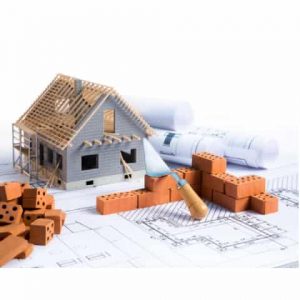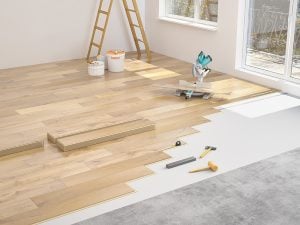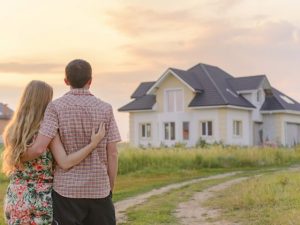Things to Consider When Buying a New Home vs. Existing Home

Deciding to buy a new build home or an existing home can be a difficult decision, especially if you have no prior real estate experience. The lure of choosing your floor plan, features, and amenities with new construction is exciting, but does it come at a higher price? Careful consideration of the cost differences between the two options can help potential buyers better decide which option to choose.
Table of Contents
The cost to purchase vs. the cost to build a house

According to the National Association of Home Builders (NAHB), the median cost to build a home (for a single-family home) in 2017 was $ 427,892. The average square footage to build your own home in this survey was 2,776, which equates to a cost of approximately $ 154 per square foot. According to Realtor.com, the average price per square foot for an existing home sold is $ 123, which is about $ 31 less than the price per square foot when building your own home.
While this may seem conclusive, it is important to remember that the figures for the estimated average cost to build a home and the cost of purchasing a pre-existing home are based on surveys of builders and real estate agents. Actual figures may vary due to reporting errors and other major factors. These factors include the location of the building, the builder you use, the building codes in your area, as well as supply and demand.
Why construction usually costs more

Building a new home often costs more for a number of reasons. These include:
Builder benefits
The builders aim to make money. According to the NAHB study, an average of 10.7% of the cost of new construction is the builder’s profit. For this reason, you will find marks in almost every aspect of the home building process. While these premiums can also carry over to the sales price of an existing home, the premiums are more apparent on new construction.
Some builders are looking to make a profit and burn by pumping as many crawler houses as possible. While, on the other hand, luxury and specialized builders are selling unique products that will have a higher price.
Changes in building codes and permits
As the world moves increasingly toward supporting environmentally conscious efforts, builders are feeling the pressure. As federal, state, and local governments change building codes and require additional permits, the cost of construction can increase. These costs can be felt with permits, cost of materials, construction practices, and other aspects of the new construction process.
Cost of land and lot premiums
When choosing a site to build your new home, you may come across expensive lot bonuses. New builders will add an additional cost to certain packages within a new community. The more beautiful the lot, the more expensive the premium will be. Things that can increase the lot premium include views, access to utilities, and size. While you will still pay for these things with an existing version, the price may be higher if it comes directly from the manufacturer.
If you are building on your own land outside of a community of builders, you will need to buy it outside of the builder. This is an additional expense that must also be factored into your budget.
Higher cost of materials
According to statistics from the United States Bureau of Labor and Statistics, construction costs are increasing. Homes are becoming more expensive to build, and builders pass these costs on to consumers.
Hidden costs of building a home

Expensive upgrades
When you walk through a model home, it generally looks beautiful. The problem? This model home generally has all the improvements added. The initial price you see advertised does not include any of these updates. If you want your home to look like the blueprints, be prepared to shell out tens of thousands of dollars for improvements. Countertops, finishes, floors, bathrooms, kitchens, and more are generally updated on models.
Hidden flaws
As builders strive to produce as many new homes as possible, quality can become an issue. As you make your final tour, you may find a lot of things that need to be fixed. The builder must cover these costs in most cases.
However, there are most likely some flaws in the house that you will not notice on the final walkthrough. Some of these may be covered by your home warranty (assuming the builder provides them to you), but others may not. You may not see things like fundamental problems or the effects of poor quality materials until you are out of the window where you can do anything without having to leave your pocket.
Existing homes have had time to address these issues, or at least expose them, so you can make a more informed purchasing decision.
Necessities not included
When you buy an existing home, you get everything you see. However, many of the things you could expect to include in the cost of building a home probably are not. Some of these things can be fences, landscaping, appliances, and other elements outside the house. When evaluating the cost of new construction compared to an existing home, make sure you know exactly what you are getting and more importantly what you are not getting.
What do you need to buy or build?

Buying a new home is exciting, but it comes with many additional challenges. First, you may have to pay a much higher security deposit (the money you set aside for the seller in the event of failure) during the purchase or construction process; this is the same for both.
With new construction, the norm is 5% and can go up to 10%. This means that you will need a significant amount of cash upfront to start the process. You will get this money back if you continue with the construction or purchase, but it must be factored into the decision-making process.
It will also need some time. New construction, according to Realtor.com, can take an average of three to six months. More custom versions may take longer. Also, builds don’t always go to schedule. The point is, you need to be prepared to stay in your current living situation while you wait for your new home to be completed unless you are buying a pre-existing home, which will dramatically reduce the time you wait to be home. new home.
Benefits of buying a new home

New home sales represent a relatively small part of the real estate market. As of December 2018, there were 44,000 new home sales in the United States, according to the Federal Reserve Bank of St. Louis. This compares with 3.77 million existing-home sales during the same period.
Those who choose to buy a new home can do so to reap the following benefits.
Ability to personalize a house
Buyers who build a home from scratch have full control over the home’s design, colors, and features. However, even those who purchase a home that is largely already built may have the option of selecting flooring, wall colors, and trim.
Fewer surprises and less maintenance
Buying a new home means there is no covered damage from faulty electrical work or water. Because everything is new, homeowners also shouldn’t have to worry about replacing the roof, updating the plumbing, or doing other major repairs for many years.
Manufacturer’s warranty coverage
A new home is not immune from trouble, but builders often back their work by offering warranties that can range from one year for exterior siding to ten years for major structural defects. While builder warranties can vary widely in duration and scope, they generally provide a level of protection not available in existing home sales.
Modern services and energy efficiency
The old houses were built for a different time. Storage space and electrical outlets can be tight. These houses do not have materials and energy efficiency standards. A new home can be more comfortable and practical for today’s modern lifestyle.
Benefits of buying a resale home

So are new houses better than old ones? Not necessarily. There are many good reasons to choose an existing property over a new home. Here are four benefits of buying a resale home.
More house for the money
Older houses generally cost less than newly built houses. The median cost of a new home in December 2018 was $ 377,000, according to the Census Bureau, while the National Association of Realtors says the median price of an existing home was $ 293,800 at the time. Also, in many cases, existing homes are larger than new homes that sell for the same price.
Better bones
The oldest houses were built with materials that are not used often today. For example, existing properties can be framed in dense and heavy woods that can provide a more solid foundation than modern wood. Drywall and tower walls, while undesirable by some people, tend to be stronger and more noise resistant than drywall. While there is always a concern that an old home may have outdated electrical or plumbing systems, its underlying structure is often timeless and built to last.
Charm and character
In addition to quality craftsmanship, older homes offer a living experience that is difficult to replicate in new properties. Existing homes can have hardwood floors, thick trim, and other features that can be prohibitively expensive to install in a new home.
Walkable neighborhoods
Those who want to live within walking distance of shops, schools, and parks may need to choose a used home. Older neighborhoods often have sidewalks and small city blocks that make it easy to get around without a car. Meanwhile, new construction is most often found in suburban subdivisions where driving everywhere is the only option. Buying a new or used home depends on what is most important to you and your family. Find out how many houses you can afford, and if you don’t like the number, remember that you can always rent.
Build or Buy: What’s Right for Me?

There is no right answer to this question for everyone. It depends on your needs, your financial situation, your logistics, and where you want to live. Take the time to weigh the different options by price, quality, and how each one meets your family’s needs or not.
The bottom line
There are many advantages and disadvantages to building your own home or buying an existing construction. Ultimately, the decision is yours and depends entirely on your unique circumstances. Take your time and weigh your options. There is no need to rush because there will always be more houses and more land to build.
Both strategies have positive and negative aspects, as we have seen. So you have to think about it yourself. Think about what you want to achieve financially through ownership. And then find out what type of property is right for you. If you want to invest in existing properties, you can check out some of the listings we have for you in Falaya. Whether you are looking for an active lifestyle, a growing family looking for more space, or looking to buy your first home, we have something for everyone.






Leave a Reply